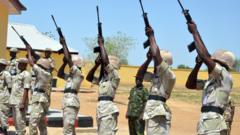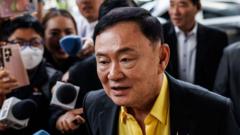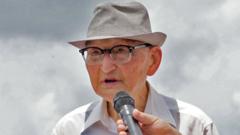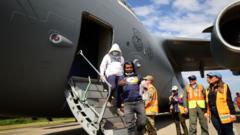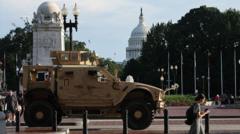As the Dalai Lama celebrates his 90th birthday, Tibet remains a region of silent resistance against severe Chinese oversight. Reports from the Kirti monastery depict a landscape fraught with surveillance, oppression, and a desperate struggle to maintain Tibetan culture and identity. The announcement of a succession plan for the Dalai Lama raises questions about the future of Tibetan Buddhism amidst Beijing's control.
Tibet's Silent Struggle: As the Dalai Lama Turns 90, Voices of Resistance Persist Amidst Surveillance
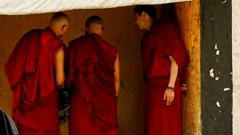
Tibet's Silent Struggle: As the Dalai Lama Turns 90, Voices of Resistance Persist Amidst Surveillance
The 90th birthday of the Dalai Lama sheds light on Tibet's ongoing battle against oppressive Chinese rule, where even whispers of resistance come with risks.
Amid the celebrations for the 90th birthday of the Dalai Lama, the reality in Tibet is far from festive. In a recent visit to the Kirti monastery in the Sichuan province of China, resilience and fear coexist as monks navigate the complexities of expressing their beliefs amid heavy scrutiny from the Chinese government.
One monk, dressed in customary crimson robes and moving his prayer beads with intention, shared the grim status of life in Tibet, stating, "Things here are not good for us." The Kirti monastery has a long history as a center for Tibetan resistance against Beijing's control, a reputation that continues to invoke concern from Chinese authorities. Surveillance cameras and police presence dominate the landscape, as the Communist Party closely monitors the actions and sentiments of the Tibetan people.
Since China's annexation of Tibet in 1950, the region has seen the introduction of numerous economic developments aimed at integrating Tibet with the rest of the nation. However, these developments have often come with a heavy military presence and a crackdown on Tibetan cultural practices, particularly those surrounding the figure of the Dalai Lama, who stands as the Tibetan symbol of autonomy.
While the Dalai Lama's birthday engages followers around the world in celebrations, emotions within Tibet are more conflicted. With the announcement that his successor will be determined only after his passing, the potential for manipulation by the Chinese Communist Party comes into focus. Beijing has already made it clear that it intends to influence the selection process, sowing doubt among Tibetans who question their ability to choose a leader free from external control.
While resistance persists, the challenges Tibetans face are profound. Human rights advocates have expressed concerns that ongoing regulations will strip the Tibetan youth of their cultural heritage, forcing them into state-run education systems where Tibetan language and Buddhist teachings are sidelined. Monks and community members have described this imposition as a direct threat to their way of life.
Despite increased surveillance and suppression, many Tibetans remain deeply proud of their heritage. The landscape of Aba, dotted with traditional temples and vibrant prayer wheels, serves as a stark contrast to the imposed narrative of state unity. Tourists may admire the colorful murals and practices, but underlying this picturesque representation lies a reality marked by years of struggle and resistance to cultural erasure.
The question remains: how will Tibet's unique identity withstand the pressures of a state determined to redefine it? As younger generations grow up under tight control, the foundational beliefs embodied by the Dalai Lama may face unprecedented challenges. Yet, the spirit displayed by the monks and community reflects a determination to keep Tibetan culture alive, even as they walk the line between devotion and defiance under watchful eyes.

